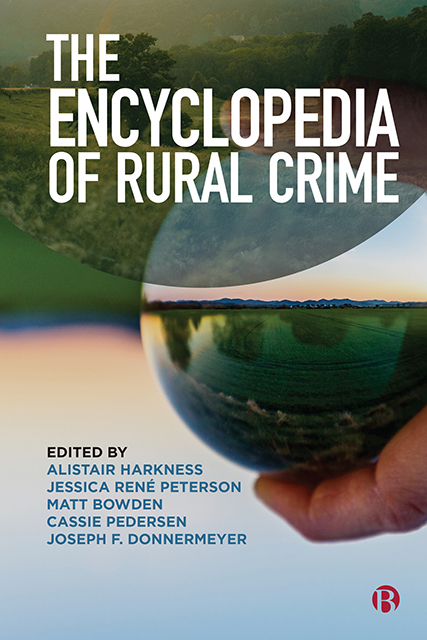Book contents
40 - Trophy and Big Game Hunting
Published online by Cambridge University Press: 20 June 2023
Summary
Trophy hunting and game hunting involve the killing, abduction and sometimes trade in dead wildlife. Trophy hunting generally involves a hunter paying a fee to kill an animal and claim its body or body parts as a trophy of conquest. In contrast to subsistence, hunting which involves killing of animals for survival (such as for food consumption or clothing) and providing for others, trophy hunting and game hunting consist of killing animals primarily for recreational purposes.
Game and trophy hunting are concerned with the pursuit of live quarry and consist of tracking and killing animals for pleasure or to display body parts such as horns, antlers, skulls, tusks or teeth (see Nurse, 2013). Trophy hunting is frequently sold via hunting safaris which, particularly in Africa, are based on the key ‘Big 5’ species: rhinoceros, elephant, leopard, lion and Cape buffalo.
From a criminological perspective, trophy hunting and game hunting engage with issues concerning the exploitation of wildlife as a natural resource and anthropocentric perspectives of animals and non-human nature as existing primarily to satisfy human interests. Trophy hunting also attracts the attention of green criminologists in respect of critical analysis of conservation and monetization of the rural environment and non-human nature. Green and rural criminologists also consider the extent to which the legal and illegal exist in a seemingly symbiotic relationship in legalized animal killing.
Trophy hunting, rurality and recreation
Trophy hunting’s reliance on species which offer trophy opportunities represents an incursion into wild areas not entirely controlled by man. Accordingly, trophy hunting is arguably direct predation against animals of a type that goes beyond simple killing and that extends into encroaching on any rights that wildlife might be said to have where they exist away from man.
In this respect, trophy and game hunting typify how humans exercise control over animal habitats, not only through the encroachment of human developments on areas where animals have historically held sovereignty in respect of having control over a territory (including a right to kill other animals where necessary for survival) but also in respect of actively managing many areas where animals live freely.
- Type
- Chapter
- Information
- The Encyclopedia of Rural Crime , pp. 158 - 161Publisher: Bristol University PressPrint publication year: 2022

